Content begins here
Contenido de la página principal
Pulsa para colapsar
Body language
Introduction
Body language is one of the most basic forms of non-verbal communication. It is made of physical behaviours, such as gestures, movements made with hands or arms, but also facial expressions, eye movements, general body posture, that convey an important volume of information while communicating.
Some experts in psychiatry have stated that body language might account for up to 65% of all our communication (Foley GN, Gentile JP, 2010). This makes it essential to understand properly this language, that will support our general understanding of any social interaction.
Once this lesson is completed and approved, learners will be able to:
- Interpret the body language used by their interlocutors and detect the hidden messages that are transmitted.
- Control their own body language to make it correspond to the message that they really want to deliver during a talk.
- Increase their capacity to attract attention from the audience and convince thanks to coherence between the speech and the gesture.
In this lesson, we will learn how to detect and identify elements of body language and analyse their meaning.
Then, we will learn how to adapt our own body language to make it a powerful instrument that comes to support our speech and strengthen our message.
Main elements of body language.
We propose here a brief illustrated summary of the main elements of body language as presented by VeryWell mind, a review specialised in psychology.[1]
- Facial expression
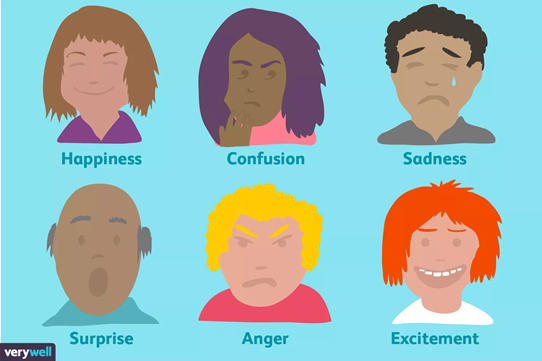
b. Eyes

c. Mouth
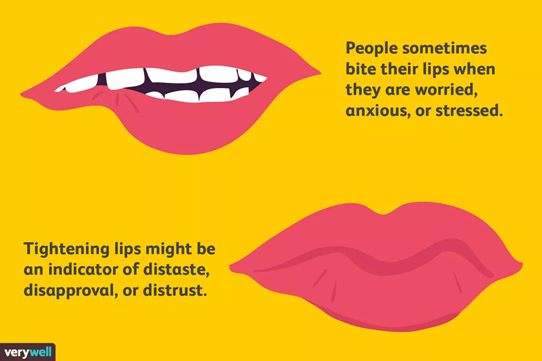
d. Gestures
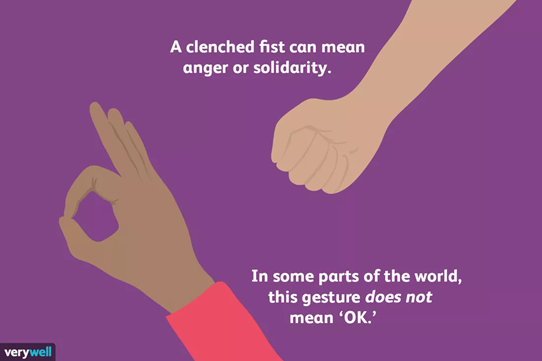
e. Arms and legs
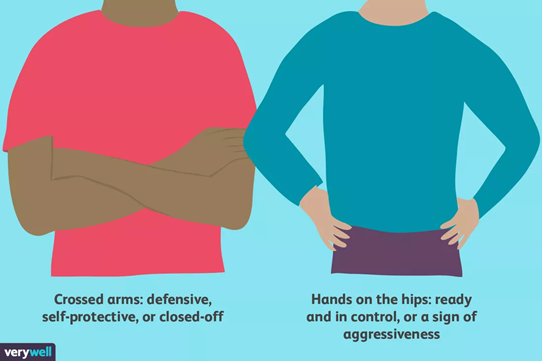
f. Posture
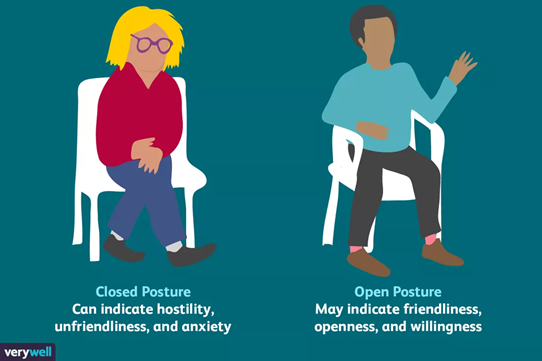
g. Distance
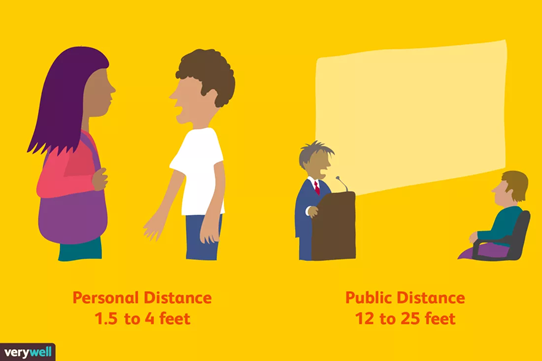
Influence of cultural elements in the body language.
The cultural background of people is an important element that must be taken into consideration while talking about body language, as there might be significant differences from one country to another. For instance, the distance you keep with your interlocutor won’t be the same in latin countries than in northern countries (where this distance is higher). Also, southern people have a higher tendency to have physical contact while talking, which could be interpreted as an aggression or intent of domination in other cultures. Japanese bow when speaking as a sign of respect, which does not mean submission. Some cultures are more kin to look into the eyes than others, etc. Those cultural elements should thus be considered to avoid misunderstanding or wrong interpretation.
Improving body signals.
Non-verbal communication thus includes work on body language. It is a competence that can be improved over time, because of conscious work on the signals received and sent.
Also, a shy person might need additional effort to establish eye contact but will learn that correct eye contact with the interlocutor will create trust and confidence in the dialogue, while when people fail to look others in the eye, you would interpret that they are trying to hide something.
In order to show your self-confidence and that you can be trusted, it would be on the contrary important to look frankly in the eyes (but not too much to avoid being aggressive), stand firmly in one place, with shoulder back and weight balanced.
Also, remember that the context is important, and that body language is only part of nonverbal communication. People might not look at you because they suffer strabismus. Other elements such as voice tone also play an important role.
Match the body language to verbal communication.
If someone tells you that everything is fine and that he/she is very happy and enthusiastic while frowning or staring at the ground, will you believe it?
Probably not. To deliver powerful messages with a high impact on your interlocutor, your body language must match your verbal communication. For this, you must use your proper body in an adequate way that clearly reflects what you really want to say.
We all tend to unconsciously reveal our true opinion through our body language. Thus, you should:
- Try to control those little nervous knocks that you might have and limit them to the minimum.
- Talk frankly and tell honestly what you think, your gesture will thus naturally follow your speech in accordance.
- Make a conscious effort to think about your physical behaviours adopted while talking and try to observe if it really sticks to what you are saying.
Conclusions
Non-verbal communication is fundamental to effectively communicate, and body language is one of its predominant expressions. Properly matching the body language to the speech will help deliver strong and convincing messages that will support our daily interpersonal communications.
Video and PDF presentationPulsa para colapsar
The following video explains the content of this lesson and shows some examples:
Video T4.L2. Body Language
Here you have the content of the video in pdf in case you need to use it in your classroom:
Lesson contents in PDFPulsa para colapsar
Here you have the contents of the lesson in PDF:

